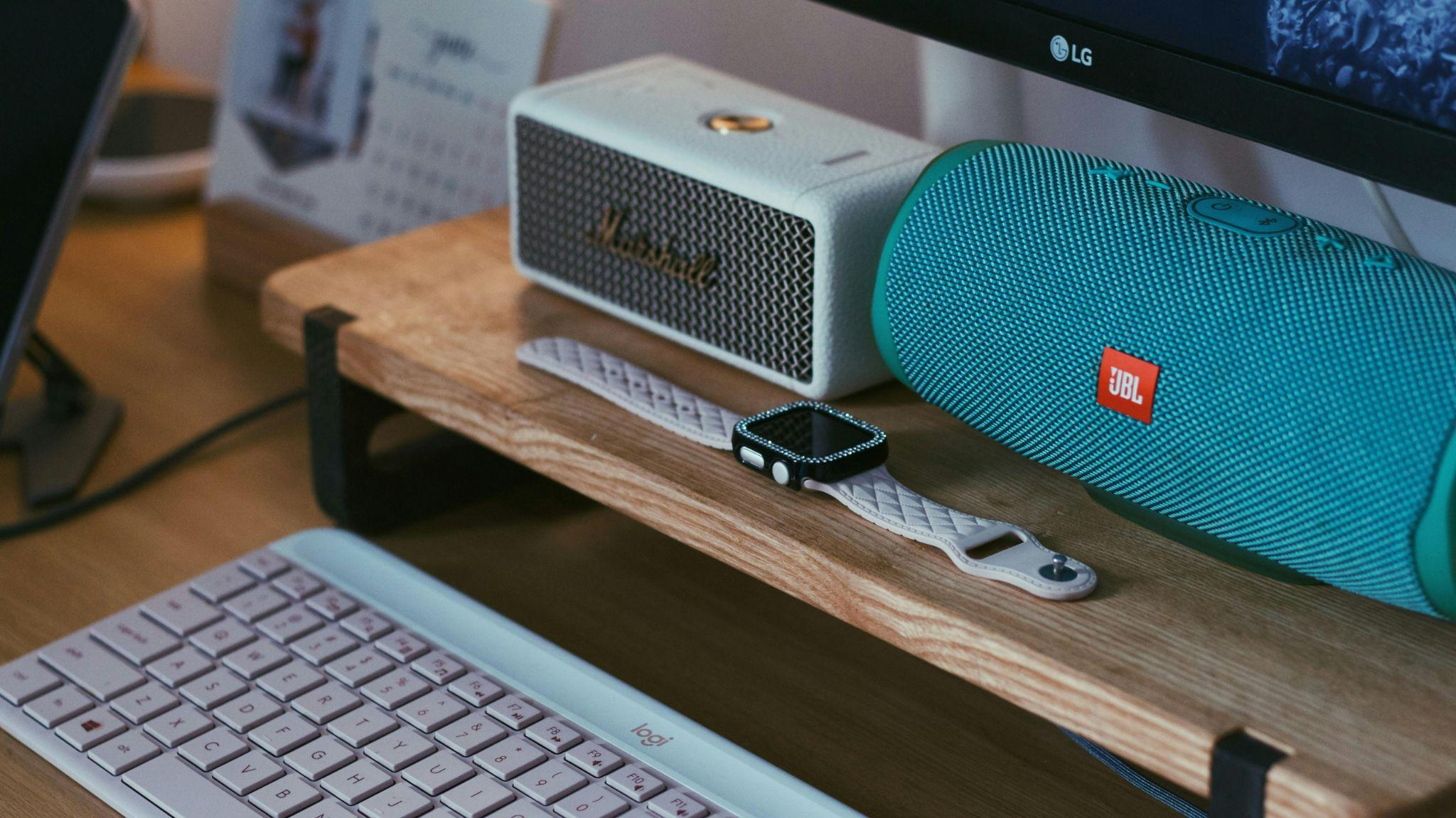
Latest Innovations in Smart Gadgets for 2025
Iren
- 0
- 304
The technology landscape is experiencing an unprecedented acceleration in smart gadget innovation, with 2025 marking a pivotal year for breakthrough devices that seamlessly integrate artificial intelligence, sustainability, and enhanced user experiences. From self-powered wearables to ambient computing systems, the latest innovations in smart gadgets for 2025 are fundamentally reshaping how we interact with technology in our daily lives.
According to Consumer Technology Association, consumer spending on smart home devices alone is projected to exceed $80 billion in 2025, driven primarily by AI-enhanced automation and energy-efficient technologies.
AI-Enhanced Home Automation and Robotics
The convergence of artificial intelligence with home automation has reached a new maturity level in 2025, with devices now capable of making intelligent decisions while providing comprehensive home management solutions. These AI-powered smart home devices are not just reactive but proactive, anticipating user needs and adapting to household patterns.
Multifunction Robot Vacuums with AI, Cameras, and Steam Cleaning
The Samsung Bespoke AI Jet Bot Steam Ultra represents a significant leap forward in robotic cleaning technology, earning a Diamond rating for its Knox security capabilities and introducing revolutionary home monitoring features. This device exemplifies how modern robot vacuums have evolved beyond basic cleaning into comprehensive home management systems.
Key features of next-generation robot vacuums include:
- AI object recognition with advanced computer vision for precise navigation around furniture and obstacles
- Integrated security cameras providing real-time home monitoring capabilities through mobile apps
- Steam cleaning technology that sanitizes floors while removing stubborn stains and allergens
- Voice integration with smart home ecosystems for seamless control
- Self-maintenance stations featuring automatic dirt disposal and mop cleaning
Intelligent TVs and AI-Powered Living Spaces
Smart televisions in 2025 have transcended traditional entertainment boundaries, functioning as central hubs for entire smart home ecosystems. These intelligent display systems now feature capabilities that extend far beyond streaming content.
Standout functions of modern smart TVs include:
- Pet monitoring systems using built-in cameras to track and interact with household animals
- Live translation services providing real-time subtitles for international content
- Voice-activated home control serving as command centers for connected devices
- Health monitoring integration displaying fitness data and wellness metrics from wearable devices
- Ambient computing interfaces that blend seamlessly into living spaces when not actively used
Sustainable and Battery-Less Technologies
Environmental consciousness has become a driving force in gadget design, with manufacturers prioritizing eco-friendly innovations that reduce electronic waste while maintaining high performance. The focus on sustainable technology represents a fundamental shift toward responsible consumption in the tech industry.
Battery-Free Indoor-Powered Perovskite Solar Cells
Revolutionary advances in perovskite solar cell technology have achieved remarkable efficiency rates under ambient indoor lighting, enabling gadgets to operate indefinitely without traditional battery replacements. This breakthrough technology captures energy from standard room lighting, making truly autonomous devices possible.
| Technology Type | Efficiency Rate | Applications | Environmental Impact |
|---|---|---|---|
| Perovskite Solar Cells | 23.3% indoors | Keyboards, sensors, IoT devices | Zero battery waste |
| Photovoltaic Films | 18.7% indoors | Wearables, smart cards | 85% reduction in materials |
| Ambient Energy Harvesting | 15.2% combined | Remote controls, switches | 90% less electronic waste |
Applications for battery-free technology include:
- Wireless keyboards and mice powered entirely by ambient office lighting
- IoT sensors for smart buildings that require no maintenance or battery changes
- Smart switches that generate power from user interaction
- Environmental monitors operating continuously without external power sources
Eco-Friendly Gadget Designs Recognized for Sustainability
Award-winning sustainable gadgets are setting new standards for environmental responsibility in consumer electronics. These devices demonstrate that green technology can deliver superior performance while minimizing ecological impact.
Notable eco-friendly innovations include:
- Modular smartphones with replaceable components extending device lifecycles to 7+ years
- Biodegradable phone cases made from plant-based materials that decompose naturally
- Solar-powered bluetooth speakers featuring replaceable battery modules
- Recycled plastic headphones incorporating 95% post-consumer materials
- Refurbished premium devices offering flagship performance with reduced environmental footprint
Tomorrow’s Wearables and XR Devices

Wearable technology and extended reality devices are converging toward seamless integration with human biology and natural behaviors. The next-generation wearables of 2025 prioritize invisibility, energy autonomy, and continuous health monitoring without compromising user comfort or privacy.
Self-Powered Smart Contact Lenses with Health Monitoring
Breakthrough developments in biocompatible energy harvesting have made autonomous smart contact lenses a reality, utilizing natural eye movements and tear fluid composition to power sophisticated monitoring systems. These devices represent the ultimate fusion of healthcare technology with daily life convenience.
Components of smart contact lens systems include:
- Microscopic glucose sensors providing continuous diabetes monitoring without blood samples
- Intraocular pressure detectors for early glaucoma detection and management
- Loop antenna systems enabling wireless data transmission to smartphones
- Flexible electronic circuits that conform to natural eye curvature
- Biocompatible materials ensuring long-term wearability without irritation
Next-Gen XR and AR Glasses with Advanced Chips & Eye Tracking
Qualcomm’s Snapdragon AR1 Plus Gen 1 chip has revolutionized smart glasses capabilities, supporting Meta Llama AI with one billion parameters while delivering unprecedented power efficiency for all-day wearability. These advances enable AR glasses to function as standalone computing platforms rather than smartphone accessories.
XR device features transforming user experiences include:
- Advanced eye-tracking systems enabling intuitive interface navigation without hand controllers
- Foveated rendering technology optimizing visual quality while conserving battery life
- Gesture recognition capabilities allowing natural hand movements for device control
- Real-time AI processing providing instant object recognition and contextual information
- Lightweight form factors achieving all-day comfort with sub-50-gram designs
According to IDC Research, global AR/VR headset shipments are expected to reach 31.1 million units in 2025, representing a 46% increase from the previous year.
Smarter Everyday Appliances and Personal Tech
Mundane household appliances are experiencing intelligent transformations, incorporating AI-powered functionality that anticipates user needs while optimizing energy consumption and maintenance schedules. These smart appliances represent the practical implementation of ambient computing in everyday life.
AI-Powered Water Purifiers and Smart Mirrors
Advanced water purification systems now feature machine learning algorithms that analyze local water quality patterns and adjust filtration processes accordingly. Similarly, smart mirrors have evolved into comprehensive health monitoring stations that provide actionable wellness insights.
| Device Category | AI Features | Health Benefits | Smart Integration |
|---|---|---|---|
| Water Purifiers | Quality prediction, filter optimization | 99.9% contaminant removal | Voice control, app monitoring |
| Smart Mirrors | Skin analysis, posture tracking | Early health issue detection | Fitness app sync, doctor alerts |
| Air Purifiers | Pollution forecasting, auto-adjustment | Respiratory health improvement | Weather integration, allergy alerts |
Functions of intelligent appliances include:
- Multi-stage filtration systems with UV-C sterilization and mineral enhancement
- Mobile app integration providing real-time water quality reports and filter status
- Voice command compatibility with Amazon Alexa, Google Assistant, and Apple HomeKit
- Predictive maintenance alerts preventing system failures and ensuring optimal performance
- Energy efficiency optimization reducing power consumption during off-peak hours
Ambient Supercomputers and Portable Screens
Personal computing is shifting toward ambient intelligence systems that provide powerful processing capabilities without traditional desktop constraints. These devices enable professional-grade computing experiences in portable formats that adapt to various work environments.
Notable features include:
- Local AI processing capabilities handling complex computations without cloud dependency
- 4K portable touch displays offering desktop-quality visual experiences in tablet form factors
- Wireless projection systems transforming any surface into interactive displays
- Modular connectivity options supporting multiple input devices and peripherals
- Extended battery life enabling full workday operation without charging interruptions
Innovations from Awards and Trade Shows

Industry recognition through prestigious awards and trade show demonstrations provides valuable validation for breakthrough technologies that will define the smart gadget landscape. These award-winning innovations represent vetted solutions that have undergone rigorous evaluation by technology experts and industry professionals.
Award-Winning Gadgets Redefining Smart Living
Consumer Electronics Show 2025 and other major industry events have highlighted exceptional devices that demonstrate the convergence of sustainability, intelligence, and user-centric design. These recognized products establish benchmarks for future development and consumer expectations.
Outstanding award winners include:
- Sustainable electric toothbrushes featuring bamboo handles and replaceable brush heads, reducing plastic waste by 78%
- Modular bluetooth speakers with user-replaceable battery modules and upgradeable amplifier components
- Smart luggage systems incorporating GPS tracking, wireless charging, and biometric locks for enhanced travel security
- Multifunctional kitchen appliances combining air frying, steam cooking, and sous vide capabilities in compact designs
- Energy-harvesting fitness trackers powered entirely by kinetic movement and requiring no charging cables
| Award Category | Winner | Innovation Highlight | Market Impact |
|---|---|---|---|
| Sustainability | Bamboo Smart Toothbrush | 100% biodegradable components | $2.3B oral care market shift |
| Home Audio | Modular Speaker System | 10-year upgradeable design | Extended device lifecycle |
| Travel Tech | Biometric Smart Luggage | Multi-factor security integration | Enhanced travel safety standards |
| Kitchen Innovation | 8-in-1 Smart Cooker | Space-saving versatility | Compact living solutions |
Conclusion
The latest innovations in smart gadgets for 2025 represent a remarkable convergence of artificial intelligence, environmental sustainability, and enhanced user experiences. From AI-enhanced home automation systems that proactively manage household needs to battery-free devices powered by ambient energy, this year’s technological advances demonstrate a mature understanding of both consumer desires and environmental responsibilities.
Wearables have evolved beyond basic fitness tracking to become sophisticated health monitoring systems, while XR devices are approaching the form factor and functionality needed for mainstream adoption. Meanwhile, everyday appliances are gaining intelligence that transforms routine tasks into seamless, optimized experiences.
As we witness this technological evolution, the latest innovations in smart gadgets for 2025 clearly indicate that the future of consumer technology lies not just in individual device capabilities, but in creating interconnected ecosystems that anticipate, adapt, and enhance human life while respecting planetary boundaries.



